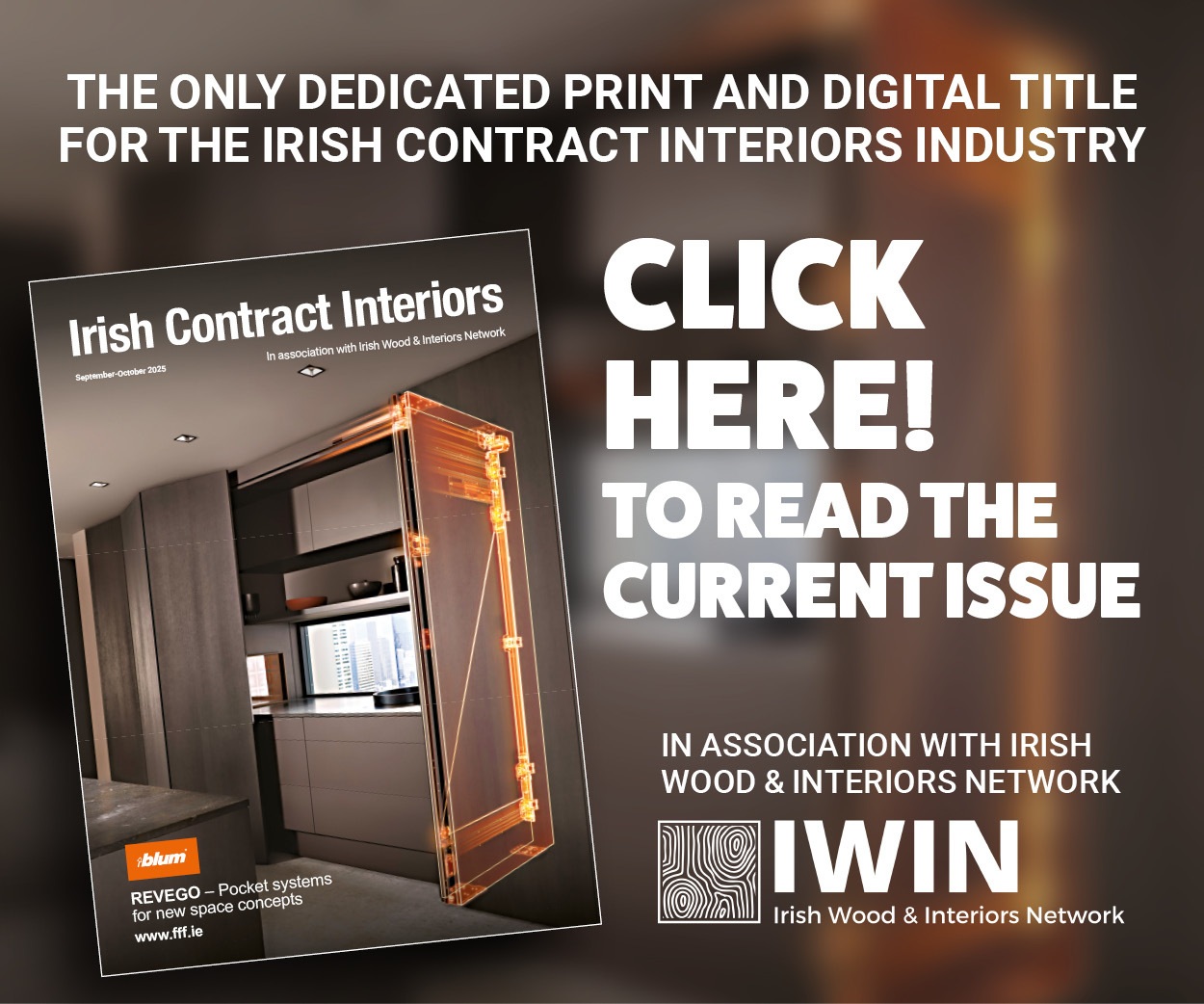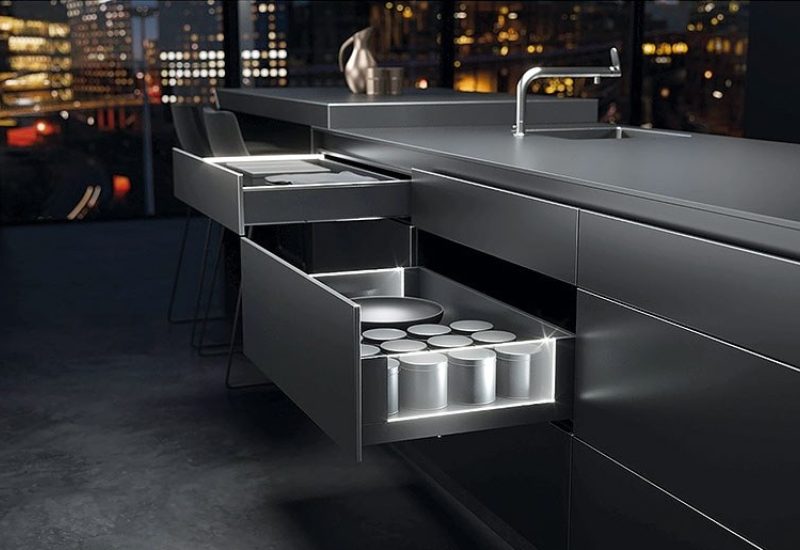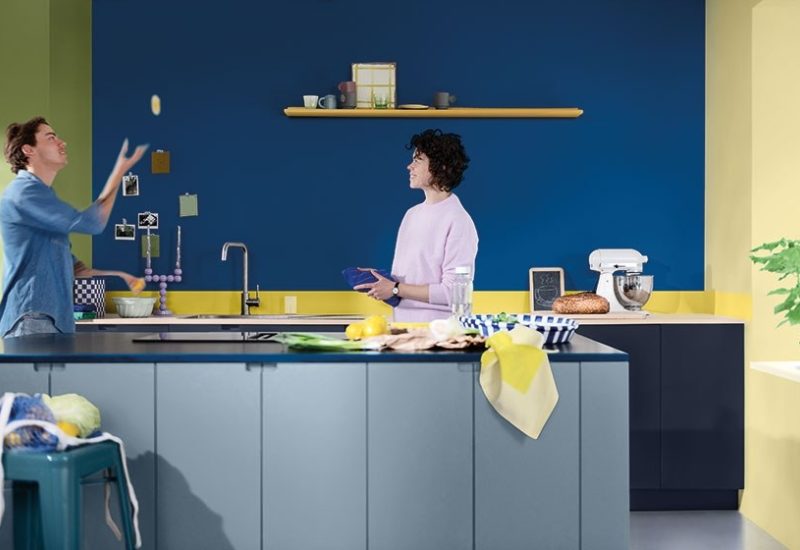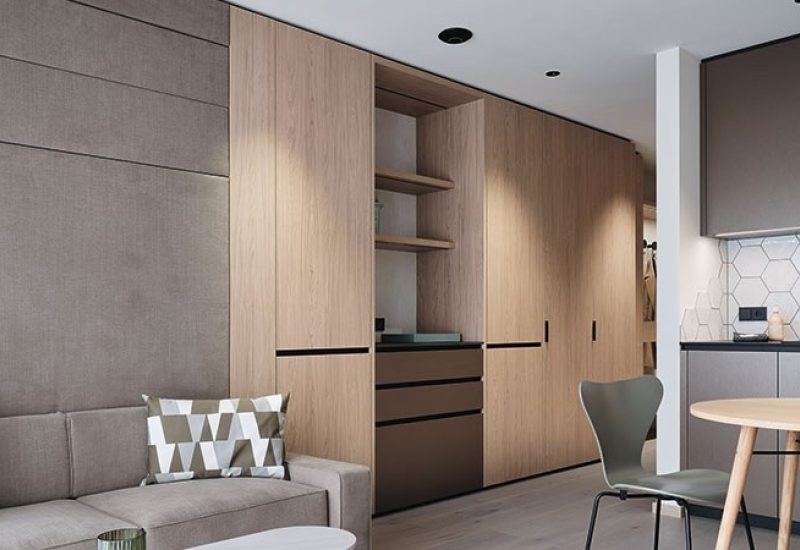The critical importance of correct specification
Expert insight on Euroclass B Flame Retardant MDF in commercial construction – and why certification and product integrity matter.

In the world of commercial construction, interior design, and fit-out contracting, safety, quality, and compliance are not optional – they are essential. When specifying materials for public buildings, hotels, retail units, educational institutions, healthcare environments, or high-traffic office spaces, selecting the correct flame retardant (FR) medium density fibreboard (MDF) can make the difference between a project that meets fire safety standards and one that potentially endangers lives and fails to comply with legal regulations. In this context, specifying Euroclass B flame retardant MDF – with complete, verifiable documentation is of paramount importance. Of the products available on the market, MEDITE PREMIER FR Euroclass B MDF stands out as the trusted, high-performance solution, offering the full package: third-party certification, CE marking, FSC® traceability, local manufacturing, technical support, and a proven reputation for sustainability.

In this fit-out article, editor John Legg speaks to David Murray, Head of Technical Affairs & Ireland Sales at MEDITE SMARTPLY to explore why correct specification and proper certification of flame retardant MDF products are essential for contract interiors and commercial fit-out applications – and why specifiers must stay vigilant against inferior, non-compliant products.
Can you explain what is meant by ‘Euroclass B Flame Retardant MDF’?
“In simple terms it refers to a type of MDF that has been treated to meet specific standards of fire safety. This means it has very limited flame spread and contribution to fire, and it therefore plays a very important role in the early stages of a fire by preventing small fires from developing into bigger ones that endanger lives.
“The Euroclass system, which is based on EN 13501-1, classifies construction products based on their reaction to fire. The classification ranges from A1 (non-combustible) to F (no performance determined), with additional indicators for smoke production and flaming droplets.”
Euroclass B-s2,d0 is one of the highest ratings achievable for wood-based panels, indicating:
• B: Very limited contribution to fire.
• s2: Limited smoke production.
• d0: No flaming droplets or particles.
“Materials with this classification are appropriate for use in escape routes, public buildings, and commercial interiors where fire safety is a critical requirement. MEDITE PREMIER FR Euroclass B is a flame retardant MDF panel developed specifically to meet these needs, with the assurance of consistent performance and full certification.”

Why does Certification matter?
“The main issue as I see it is that there is a lot of confusion between the terms ‘Flame Retardant’ and ‘Fire Resistant’. In the competitive commercial interiors sector, FR wood-based panel products are often incorrectly advertised as ‘fire rated’ or ‘fire resistant’, but the correct term is ‘Flame Retardant’.
“On the surface this may come across as overly nit-picky, but the truth is it is very important in the context of the materials contribution to a fire. We regularly get asked for ‘half-hour fire rated MDF’, so let me be clear – no such product exists! While it’s true the product can be incorporated as part of a fire rated building component, that full component must be tested and certified accordingly, for example a 30-minute fire rated wall assembly designed to withstand fire exposure for 30 minutes before the fire spreads to the other side. That’s called ‘Fire Resistance’ which is beyond the scope of an individual product.
“At the individual product level, the correct terminology is ‘Reaction to Fire’ as described above. Each product in that wall assembly will react differently to fire in the various stages of fire development and growth, depending on their position in the buildup, and that’s why it’s vital to test the final assembly as it will be installed in buildings.
“True product compliance is only proven through third-party certification and a complete suite of supporting documentation. The CE mark alone is not enough – products must be backed up by the correct performance evidence.”
Here’s what you should expect to see when specifying Euroclass B flame retardant MDF:
1.Declaration of Performance (DoP): This legally binding document declares the essential characteristics of the product, including its reaction to fire performance, mechanical properties, and durability. It links the product to the relevant harmonised standard (typically EN 13986 for wood-based panels).
2. Fire Classification Test Report: A report issued by a notified testing body showing compliance with EN 13501-1, confirming Euroclass B-s2,d0 performance. This report should clearly state the test method (e.g., EN ISO 11925-2 for ignitability, and EN 13823 for Single Burning Item) and the precise product that is tested for its intended applications in construction (called the ‘field of application’) – which is a critical level of detail that is often overlooked.
3. Certificate of Constancy of Performance (CoCoP): This certifies that the manufacturing process consistently produces product that performs as declared. Issued by an independent third party body, it provides assurance of long-term compliance.
4. Attestation of Conformity/AVCP System 1: The CoCoP should clearly refer to the Assessment and Verification of Constancy of Performance (AVCP) system number, i.e. flame retardant MDF for safety-critical use in low-risk buildings requires System 1 attestation, which requires third party audit and factory production control certification.
5. CE Marking: CE marking on the product label, supported by a proper DoP, is required for placing the product on the European market (or UKCA mark if the product is destined for Great Britian). However, it must be substantiated by all of the above documentation. In the case of AVCP1, a manufacturer may only apply a CE mark to the product if they have a valid CoCoP.
“Without these, there’s a risk that what appears to be a Euroclass B product may not meet the specification in real-world conditions – or may not be legally compliant. A product data sheet is not proof of compliance!”

You mentioned ‘Field of Application’ as being critically important – why is this?
“Yes, this is one of my biggest bugbears because all to often we see either good products being used incorrectly, or poorly performing products being used in the correct end-use application! It is one of the most misunderstood or overlooked aspects of flame retardant panel specification, yet it can be life-critical and therefore carries serious legal consequences in the case of product misuse, incorrect specification or irrelevant certification.”
The Euroclass rating of a panel is only valid within the conditions under which it was tested, which includes:
• Panel thickness: Thinner panels may not meet the same classification.
• Density and formulation: Any change to raw materials or additives can affect performance.
• Mounting and fixing: The way panels are installed (ventilated vs. non-ventilated cavity, with / without air gaps, with / without joints) can significantly influence fire behaviour.
• End use environment: Some test reports are only valid for flooring applications, not wall lining or ceiling applications. Also, certification may only be valid for free standing furniture and not fitted furniture, such as reception desks in hotels or fixed beds in student accommodation, for example.
“MEDITE PREMIER FR Euroclass B MDF comes with clearly defined documentation specifying its approved field of application. This means specifiers, contractors, and regulators can be confident that the panel’s fire performance applies to their intended use – whether wall lining, partitions, ceiling panels, or fixtures in commercial fit-outs.
“Specifying untested or poorly documented products particularly from unknown or imported sources risks invalidating fire performance claims, potentially resulting in non-compliant installations and serious safety liabilities.”
Why should the contract interiors sector choose MEDITE PREMIER FR Euroclass B MDF?
“As a MEDITE employee, of course I would say this, but because it’s the best! If I take off my sales hat and put on my technical hat (which I regularly do!), I can honestly say that our long-standing and loyal customer base is the result of continuous investment in plant and people over many years.
“With the best technology and good people, MEDITE has built a solid reputation of quality, reliability and trust. I was very humbled recently whilst being given a tour of a very large joinery and specialist fit-out company, and being told that MEDITE is the only brand of MDF they use – Why? Because their skilled tradespeople demand it, and they have tried alternatives over the years, but they didn’t compare on machinability, fixing or finishing.
“Hand on heart, that’s genuinely what we were told! It’s amazing to receive testimonials like that from the people who know the trade.”
MEDITE has been producing MDF since 1983, so as the leading brand in the flame retardant MDF category, MEDITE PREMIER FR Euroclass B MDF offers a robust and verifiable solution backed by years of innovation and trust, including:
1.Proven Compliance: MEDITE PREMIER FR is fully certified to Euroclass B-s2,d0, with test data, CE documentation, and AVCP System 1 certification available on request. Unlike some generic imports, MEDITE’s documentation matches the exact product delivered to customers workshops.
2. Manufactured in Ireland: Produced in Clonmel, County Tipperary, MEDITE MDF supports local jobs and distributor supply chains, reduces transport emissions, and ensures rapid delivery across Ireland.
3. High and Consistent Quality: Manufactured using advanced production processes and rigorous factory production control, MEDITE PREMIER FR delivers consistent performance, which is critical for multi-phase or large-scale fit-out projects.
4. Technical Support and Innovation: MEDITE is renowned for pioneering engineered wood solutions, with a dedicated technical and R&D team providing support on everything from reaction to fire performance to fabrication challenges.
5. Sustainability and Trust: Owned by Coillte, MEDITE manufacture MDF using sustainably sourced wood from FSC® and PEFC certified Irish forests and sawmill residues, and the company is committed to the highest standards of corporate and sustainability governance, innovation, and customer service.
6. Reliability: MEDITE’s reputation has been built over decades. Specifiers can count on accurate documentation, consistent supply, and professional support from our team of Technical Sales Managers who are based in Ireland.

What are the potential pitfalls of specifying inferior brands of MDF?
“Look, I make a point of not dissing our competitors’ products, in the same way that I would not expect them to criticise what we do. However, there are times where I strongly believe in calling out bad and especially dangerous practice. To coin an overused but very relevant cliché, ‘you get what you pay for’. While cheaper imported MDF products may appear attractive at first, they often fall short when it comes to full compliance, documentation, traceability, technical support and quality.
“Many imports claiming Euroclass B performance lack the essential third-party certification or only present test reports for similar – not identical – products.
“The best example I can give you of this is when I was asked to speak at a small specifier event held in RIAI HQ in Dublin a number of years ago, and in the Q&A session a well-intentioned Architect queried the documentation that I had just presented and asked me to comment on a specification that she had assumed was correct.Long story short, upon close inspection of the test report and certification documentation, it was very clear that someone had ‘doctored’ the DoP for an imported MDF to match the MEDITE fire classification report and supporting certification documents.
“While I was very uncomfortable highlighting this in an open Q&A forum, it was a huge wake up call for that Architect and we had a detailed discussion afterwards to ensure the specification was correct. That’s the worst case I have come across, and I’m not trying to scaremonger but sometimes we as professionals in the building industry need to call bad practice for what it is!
“Architects can have hundreds of products to understand in any given project, so they rely on product manufacturers to do the right thing and stand over their products. There are many other examples of incorrect specification of flame retardant products, but I believe most of them are not intentional, just an unfortunate consequence of complexity, which is why MEDITE place such a strong emphasis on training and providing clear guidance on the specification and use of our products.”
Key risks include:
• Misleading CE marks with no corresponding valid DoP or third-party verification.
• Invalid classification reports, such as those conducted on different thicknesses, finishes, or panel constructions.
• Mismatched test reports, where the classification test report numbers do not match those declared on the Certificate of Constancy of Performance.
• No field of application declaration, making it impossible to confirm suitability for the intended use.
• Inconsistent product quality, potentially leading to on-site installation issues, safety risks, and warranty problems.
“Finally, from a sustainability perspective,” Murray adds, “it’s incredible in this day and age that some imported products do not carry FSC® or PEFC certification as standard. While these products are often cheaper than fully certified brands, someone and somewhere else is paying the high price for it, in terms of environmental and biodiversity negligence, and this needs to be highlighted. Unfortunately, there is nothing preventing the supply chain from buying and selling uncertified products, and some suppliers are choosing to look the other way to get a quick sale or make a bit more profit if it’s not asked for on a job. Therefore, I would urge all Specifiers and Contractors to insist on this certification which ensures that the timber comes from responsibly managed forests where trees are replanted and the environment is protected, and to buy from local sources where possible. Ireland has an abundance of certified sustainable forests so there is no excuse!”
Final thoughts: Specification Integrity Matters
The modern construction industry demands not only functional and aesthetic excellence but also uncompromising safety and compliance. For contract interiors and commercial fit-out projects, the correct specification of Euroclass B flame retardant MDF is a critical safety decision.
To ensure legal compliance, public safety, and lasting performance:
• Always demand full documentation – including DoP, fire classification reports, and Certificate of Constancy of Performance clearly showing AVCP system 1 compliance.
• Insist on clarity of field of application – do not assume test results apply to every thickness or mounting condition.
• Choose trusted, certified brands – like MEDITE PREMIER FR Euroclass B MDF—that offer performance, transparency, and support.
• Machining/finishing – check that any additional post-manufacture treatment, processing or finishing of the finished component will not adversely affect the fire classification of the MEDITE PREMIER FR Euroclass B panel.
• Timber sustainability: Insist on products that carry either FSC® or PEFC certification.
Specifying Flame Retardant wood-based panels is arguably the most complex of all design challenges in the arena of internal joinery and fit-out. However, when you break it down into small chunks, it is not nearly as daunting as it may first seem. To help the industry understand the subject, MEDITE SMARTPLY has written and produced a comprehensive ‘specification guide to Flame Retardant Wood Panels’, in 5 parts, covering Terminology; Regulatory controls; Product testing; Specification; & Features & Benefits. These can be downloaded via their website.
When safety is on the line, compromise is not an option. That’s why MEDITE remains the market leader – and why informed specifiers choose only the best.









